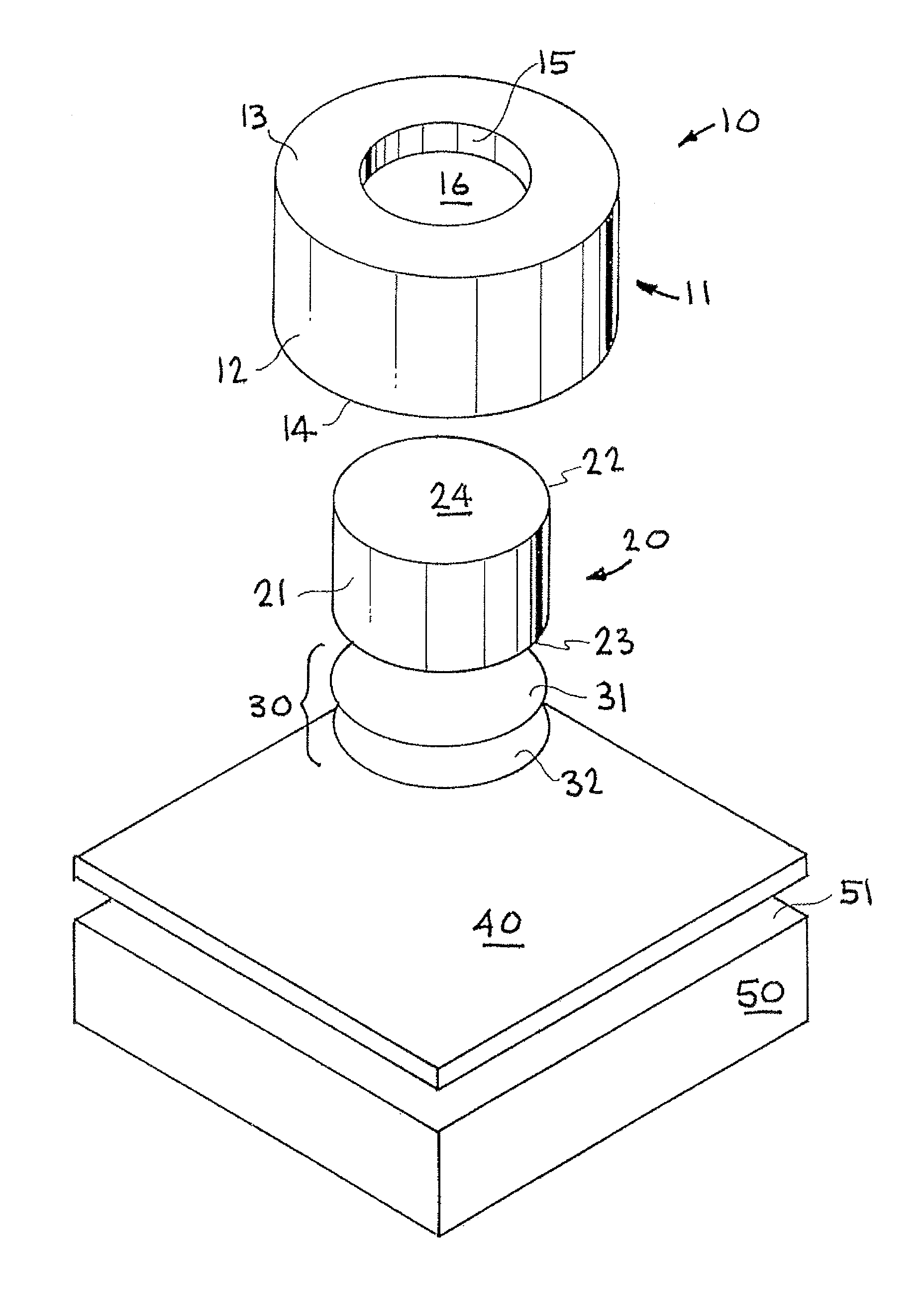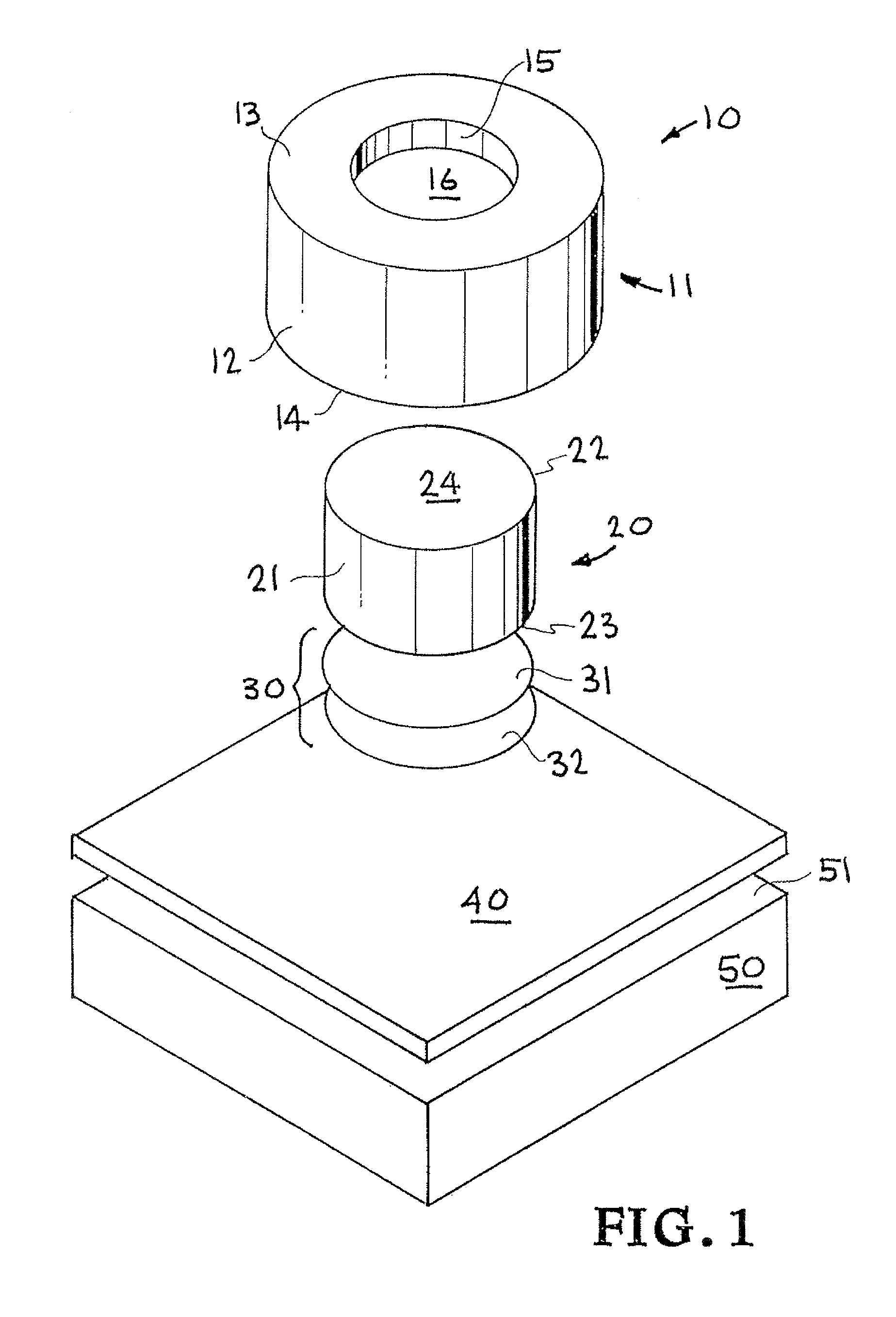Passive blast pressure sensor
a sensor and blast pressure technology, applied in the field of blast pressure sensors, can solve the problems of difficult diagnosis of bitbi, difficult to read, complex, etc., and achieve the effect of quick assessment of the magnitude and severity of the blast, easy and quick reading, and easy observation of the change in the color of the film
- Summary
- Abstract
- Description
- Claims
- Application Information
AI Technical Summary
Benefits of technology
Problems solved by technology
Method used
Image
Examples
Embodiment Construction
[0028]Turning now to the drawings, FIGS. 1-3 show a first exemplary embodiment of a blast pressure sensor of the present invention, indicated at reference character 10, and generally having a pneumatic piston-cylinder construction including a cylinder barrel 11, a piston 20 moveably guided in a cylinder bore of the cylinder barrel, a rigid body (such as back plate 40) with a strike surface 51 bounding one end of the cylinder barrel, and a contact stress sensitive film 30 positioned between the piston and the strike surface and which changes color in response to a predetermined minimum contact stress.
[0029]In particular, the cylinder barrel 11 has a cylinder wall 12 enclosing a cylinder bore which extends between a first bore end 13 and an opposite second bore end 14, both of which are open ended. The first bore end 13 of the cylinder barrel is also shown having a collar, flange or lip 15 for retaining the piston 20 in the cylinder bore, and which defines the opening 16. However, oth...
PUM
| Property | Measurement | Unit |
|---|---|---|
| threshold pressure | aaaaa | aaaaa |
| contact stress | aaaaa | aaaaa |
| threshold pressures | aaaaa | aaaaa |
Abstract
Description
Claims
Application Information
 Login to View More
Login to View More - R&D
- Intellectual Property
- Life Sciences
- Materials
- Tech Scout
- Unparalleled Data Quality
- Higher Quality Content
- 60% Fewer Hallucinations
Browse by: Latest US Patents, China's latest patents, Technical Efficacy Thesaurus, Application Domain, Technology Topic, Popular Technical Reports.
© 2025 PatSnap. All rights reserved.Legal|Privacy policy|Modern Slavery Act Transparency Statement|Sitemap|About US| Contact US: help@patsnap.com



